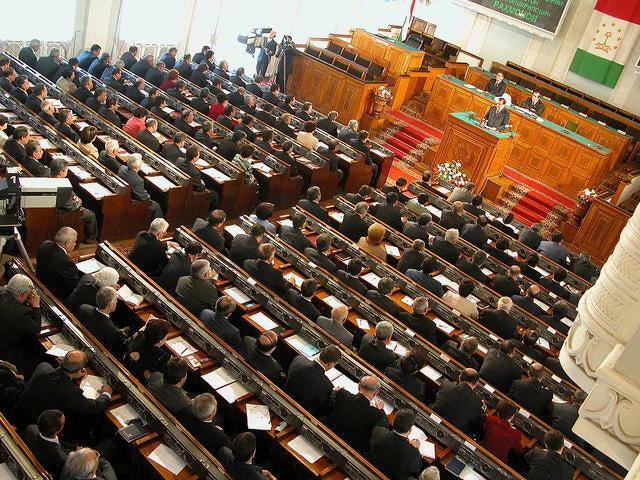Editor's note: This blog post is part of a series for the 'Bureaucracy Lab', a World Bank initiative to better understand the world's public officials.
Photo: © Gennadiy Ratushenko / World Bank
Bureaucratic structures are complex. A given country’s norms and values can be difficult to comprehend for outsiders trying to engage in governance reform there. How can anthropologists help us understand the dynamics of a bureaucracy or government organization?
In rural Tanzania, more than seven million citizens lack reliable access to clean water. At any given time, 46 percent of rural water points need repair. An all too easy way to rationalize government shortcomings would be to label officials as lazy or corrupt. However, this statement oversimplifies the issue at hand and fails to dive deeper into the underlying bureaucratic structures that hinder successful service delivery.
Anthropologist Julia Bailey spent five months embedded with civil servants in Tanzanian water departments and recently published a World Bank Working Paper on her findings. According to Matthew Hull and Colin Hoag, anthropologists who have put together a literature review of the anthropological literature on bureaucracy for the Bureaucracy Lab, researchers like Julia can help us better understand how bureaucracies function.
Through analysis of the everyday functioning of officialdom, anthropologists study organizational culture, associated power dynamics, how civil servants interpret and apply policy, and how well bureaucrats know and understand their citizens when developing policies. All these factors contribute to the success or failure of government initiatives. Hull and Hoag point out the importance of understanding the minutiae of bureaucratic life to developing governance reforms.
Bailey’s work observing and studying bureaucracy from an anthropologist’s point of view exemplifies an exciting approach to understanding the world’s civil servants, which can ultimately improve development projects and service delivery.
Here are some takeaways from her observations:
- Tanzanian officials don’t proactively build water facilities in areas where water is not yet available. Communities must actively request services they need from water departments. Such requests often must be made in the form of official letters. In many rural Tanzanian communities, women are the main users of water services; they are also more likely than men to be illiterate, making it harder for them to officially demand aid.
- The symbolic power of new infrastructure nudges civil servants towards focusing on new water projects rather than on maintaining existing infrastructure. Infrastructure is a source of “symbolic capital” because it has more power to represent the state’s efforts to supply services to communities than maintaining projects. Thus, civil servants are incentivized to take on new projects through pressure from politicians and efforts to prove their own effectiveness.
- Decentralized decision-making is more inclusive, but it threatens the quality of the relationship between communities and public officials. By putting the emphasis on citizen engagement, policy-making quickly becomes purely ‘demand-driven’, skewing resources to those most able to engage with officialdom.
- The Tanzanian water departments should create a culture to “celebrate maintenance.” Julia recommended adopting public campaigns to change culture and expectations within and outside the government.
Adopting an anthropological lens when trying to understand such complex topics as government inadequacy can deeply enrich perspectives as well as provide clearer solutions. Julia Bailey’s work brings insights that can be key to getting clean water to Tanzanians who need it. Broad statistics or 30-minute surveys are always going to struggle to get at those insights and can only offer a superficial understanding of the problems at hand. A similar inquiry into the gaps that Hull and Hoag identify will give us new ways of understanding civil service, and help bureaucrats across the world serve people better.
What do you think? Tell us in the comments.
Tweet these:
How does anthropology help us understand bureaucracy? #goodgov
An all too easy way to rationalize government shortcomings would be to label officials as lazy or corrupt. #goodgov




Join the Conversation